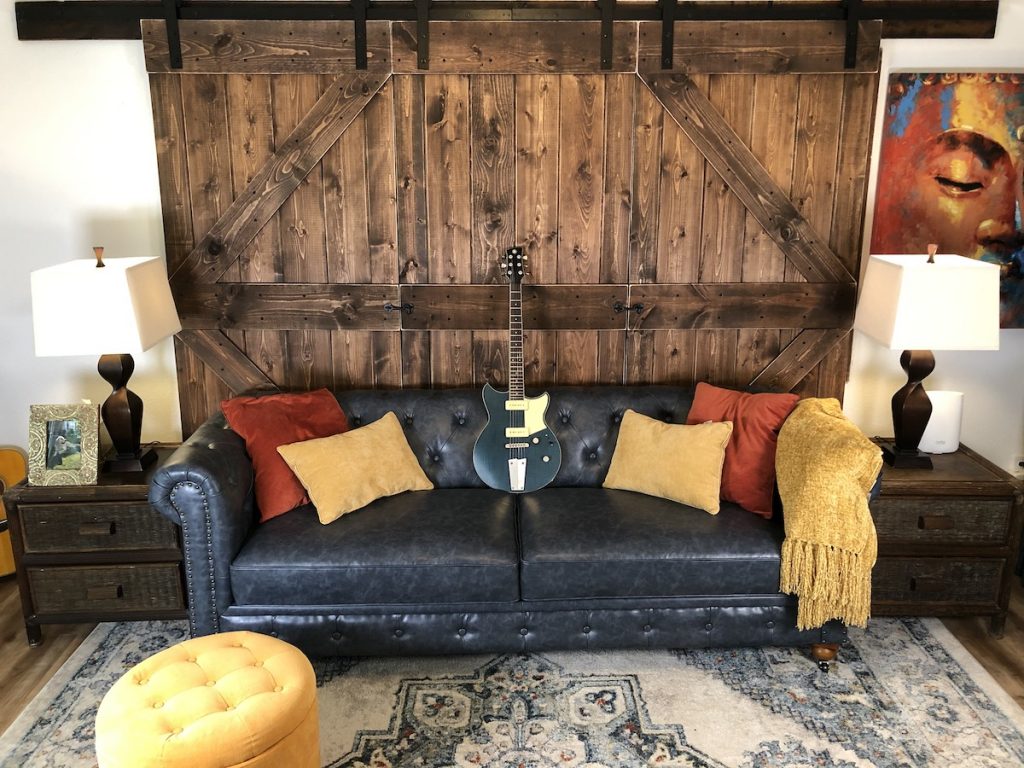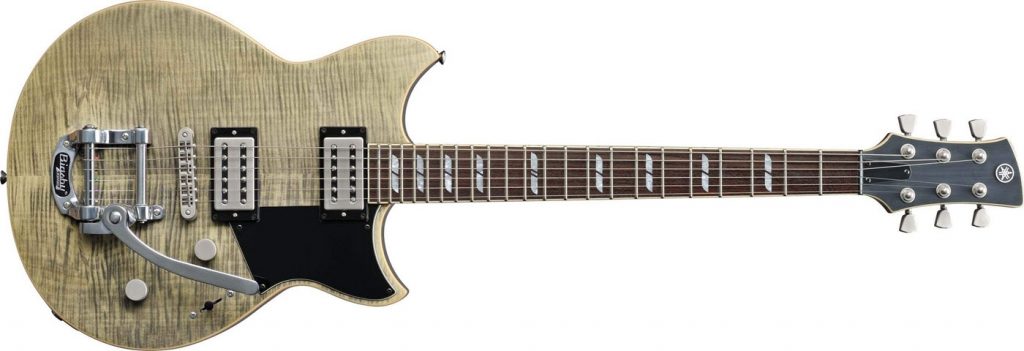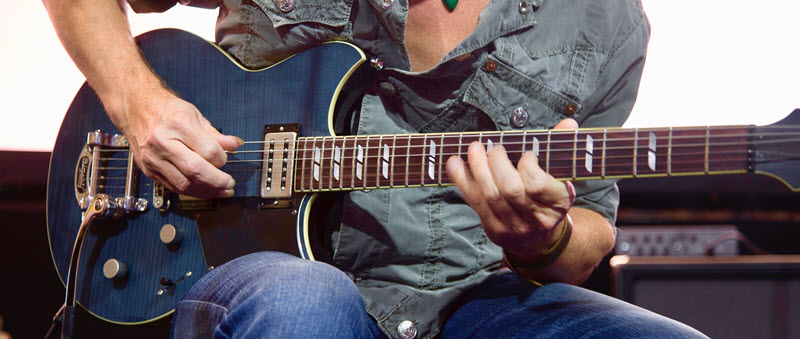Power Practice
Here’s how to achieve your musical goals.
My 2020 got off to a flying start with a gig on New Year’s Eve. The very next day, I was recording tracks in preparation for the NAMM® show, where I’d be representing Yamaha Guitars.
Nothing motivates me to achieve a goal more than a deadline. If a deadline doesn’t exist, I create one for myself. In this instance, it was easy since I knew that when I got home from the show in California, I’d be finishing out my studio so that I could start filming a new guitar course for release this spring. I’d already bought all the audio/visual/lighting gear that I needed and figured out how to use it all by reading the manuals and watching YouTube™ videos. (Yes, sometimes it helps to read the manuals!)
I’d scheduled a week to build three barn doors and hang them for the studio backdrop:

The guitar in this photograph, by the way, is a Yamaha Revstar 502TFM with P90 pickups, a mahogany body and a gorgeous Vintage Japanese Denim finish on flame maple. It sounds great and looks great too!
I figured I’d then take a day to set up cameras, film lighting tests and record audio demos to make sure that guitars, backing tracks and microphones were balanced without clipping the input signals. Once those tasks were complete, I could start crafting the new course. But, needless to say, I couldn’t film content without planning for it first. To that end, I’d already visualized the concept, written a course outline, recorded the tracks, rendered chord/scale diagrams and completed a Mind Map of the workflow — more about this shortly.
In addition, setting a realistic goal for each day of filming would prove invaluable because I also wanted to edit and master each session before filming the next series of lessons. (Editing each day allows you to check that there are no glitches in the system before investing more time in the next session.)
In a similar way, I also apply a solid work ethic to my practice time and have formulated a series of approaches to achieving consistent progress and positive results. In this edition of the Calvo Report, I thought I’d share with you a few ideas on how to maximize your practice sessions and keep you moving steadily towards your musical goals.
Decide on a Big Picture
The first thing to do is take a moment to decide on a “big picture” goal. This could be as simple as learning a new song or as grand as touring the world with your dream band. Once you have a target desire, place a deadline on achieving that goal — for example, one week to learn the song and two years until the start of the tour.
Create a Mind Map
The next step is to create a mind map — a powerful tool I discussed in a previous blog posting. I like the visual aspect of mind maps because they incorporate color, shape and purpose. You can add sub-topics to your central theme (big picture) and designate the steps you need to take, in order of importance, to achieve your goals.
For example, suppose your goal is to become proficient improvising over an A7 chord using a dominant 7th arpeggio. Here’s what a mind map of that might look like:

Let’s look at each of these intermediate steps in greater detail:
1. Set your intention. Take a moment to set your intention for the task at hand.
2. Set time frame. Designate a length of time for each practice session and stick to it.
3. Visualize the chord. Visualize and name the notes of an A7 chord located at the 5th fret on a guitar.
4. Visualize the arpeggio. Find a fingerboard diagram of an A7 arpeggio shape located at the 5th fret. Visualize the arpeggio shape on the fretboard, and then “see” (in your mind) each finger playing each of the notes. Visualize this sequence of notes five times ascending and five times descending.
5. Pick up your guitar and play an A7 chord, name each note in the chord, and then apply the arpeggio shape to the fretboard without referencing the diagram. Finally, name the notes in the arpeggio. The quicker you get the information you’re learning “off the page” into your mind, the better. Visualization will help you achieve that.
6. Play a simple lick using the arpeggio tones, and then reference the chord immediately afterwards. This will help you associate the arpeggio with the chord and solidify the sound of each tonality.
At the end of your focused 15-minute practice session, you’ll have achieved one of your goals. Keep adding goals to your list until you accomplish the designated “big picture.”
The Video
Here’s an interview filmed last November in Nashville with guitar instructor Erich Andreas. The topic was “How to Practice with Intention,” although we actually went quite a bit deeper than that. I think you’ll enjoy watching it.
The Wrap-Up
Your mind is your most powerful asset. When we set our intention towards a specific goal and designate a series of smaller stepping-stones as a pathway towards that goal within a definitive timeframe, there’s almost nothing we can’t achieve. Give it a try!
Photograph courtesy of the author.
Check out Robbie’s other postings.
Click here for more information about Yamaha Revstar guitars.















